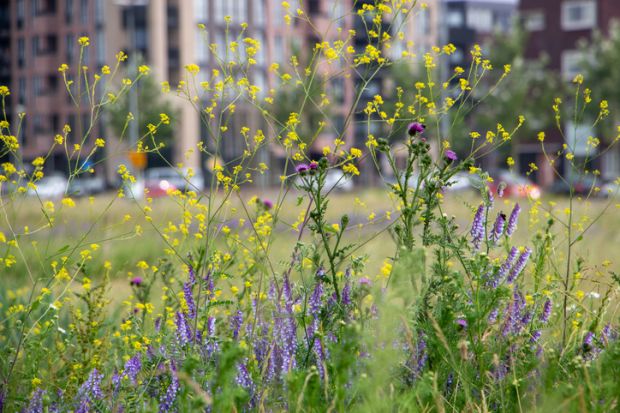The loss of nature should be of crucial concern to every inhabitant of our planet.
In the UK, one in four mammal species is threatened with extinction, while land and freshwater species have declined by 13 per cent since 1970. And this does not affect just the natural world. The World Economic Forum has highlighted that the global decline in biodiversity is having a significant effect on human health, economies and livelihoods. In every sense, this is alarming.
Universities, particularly those fortunate to have large, non-urban campuses, can and should play a leading role in guiding nature’s recovery. It is vital that we carry out and publish scientific research that measures and seeks to understand changing patterns of biodiversity across the globe, but it also matters how we practically manage our own land.
Many universities incorporate sizeable green spaces and communities that want to be involved in conservation projects. Ark Wildlife found that of 122 UK universities surveyed for its wildlife-friendly activity, almost a third – including my institution, the University of Sussex – engage in a range of proactive activities, such as partnering with and funding local wildlife projects, implementing policies to encourage wildlife on their own land, and encouraging staff and students to create and engage with biodiversity initiatives.
At Sussex, we are intent on having the most biodiverse campus in the UK. Overseen by our crop of leading environmental researchers, we are well under way with our commitment to radically increase the biodiversity of our own 80 hectares, plus that of the woodlands and open fields that surround us, through a number of nature recovery interventions.
Over the past decade, our researchers’ initiatives have included restoring areas of natural chalk grasslands on the neighbouring South Downs (home to 60 per cent of the UK’s butterfly species) and, on campus, sowing native wildflower species for pollinators and insects and creating ponds to encourage amphibians.
But there is much more to be done, and we have a passionate and vocal community that rightly holds us to account on this. Following an extensive consultation with students and staff, we have just published our new biodiversity policy. This sets out our vision to expand the proportion of our campus handed over to nature to 42 per cent.
Working with our academics, all of our campus land has been designated into four categories: amenity land (such as lawns for human use), reduced mowing areas, low management areas (mown once a year), and passive rewilding (where nature is allowed to develop freely). These will be managed in strict accordance with a suite of good-practice principles for achieving a net gain in biodiversity. This includes aiming to be a pesticide-free campus.
In order both to develop our plans and to provide a solid evidence base for evaluating progress, we have undertaken an audit of each of the different areas of the campus environment, counting the number and varieties of trees, birds, pollinators and insects. This was part of our “Big Biodiversity Conversation”, which asked our community to suggest viable interventions to enhance biodiversity on campus. The enthusiastic engagement generated many creative ideas, from which we are currently developing five projects. These include allowing scrub habitat to flourish to support sapling trees and provide a haven for small mammals, planting an orchard of native fruit trees, and installing bat and bird nesting boxes on campus buildings.
Our commitment to biodiversity is woven through the fabric of research, education and extracurricular student experience at Sussex. The bird and bat boxes project and the pollinators project involve regular monitoring of the ecological impact of each intervention by staff and students. Similarly, a gardening project for students and staff from our School of Psychology is measuring the impact of these activities on participants’ mental health.
It is heartening to see our campus community so focused on protecting nature and boosting biodiversity – and finding joy, fulfilment and well-being in doing so. Shortly after starting as vice-chancellor here last August, I shared my vision that the intertwined goals of environmental sustainability and human flourishing shall be central to our mission and purpose. These priorities resonate strongly with longstanding commitments at Sussex to international development, global social justice and the UN Sustainable Development Goals.
Universities across the world are setting themselves ambitious targets for reducing carbon emissions. But this is only one of the environmental crises the world faces. The other is the devastating loss of our natural environment. Now is the time for all universities that have stewardship of significant areas of land to extend their sustainability focus and commit to increasing biodiversity on their home territory.
Universities are uniquely placed to drive biodiversity initiatives and discovery, not just for our own staff and students but for the benefit of global communities and, ultimately, our planet.
Sasha Roseneil is vice-chancellor and president of the University of Sussex.




